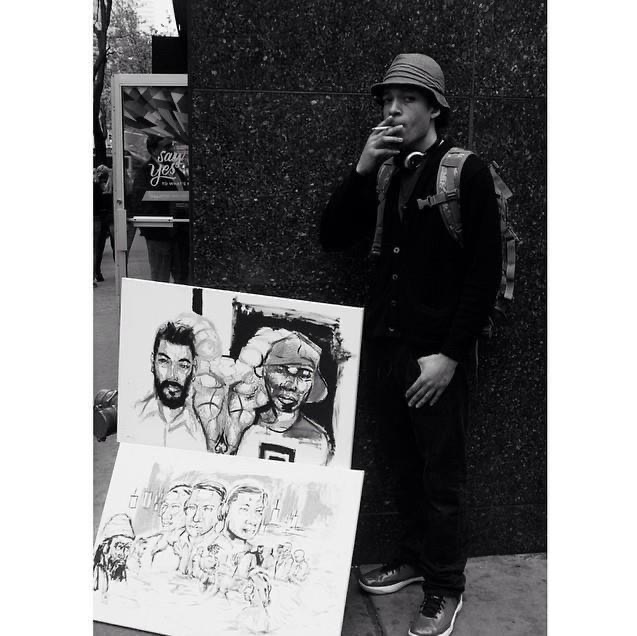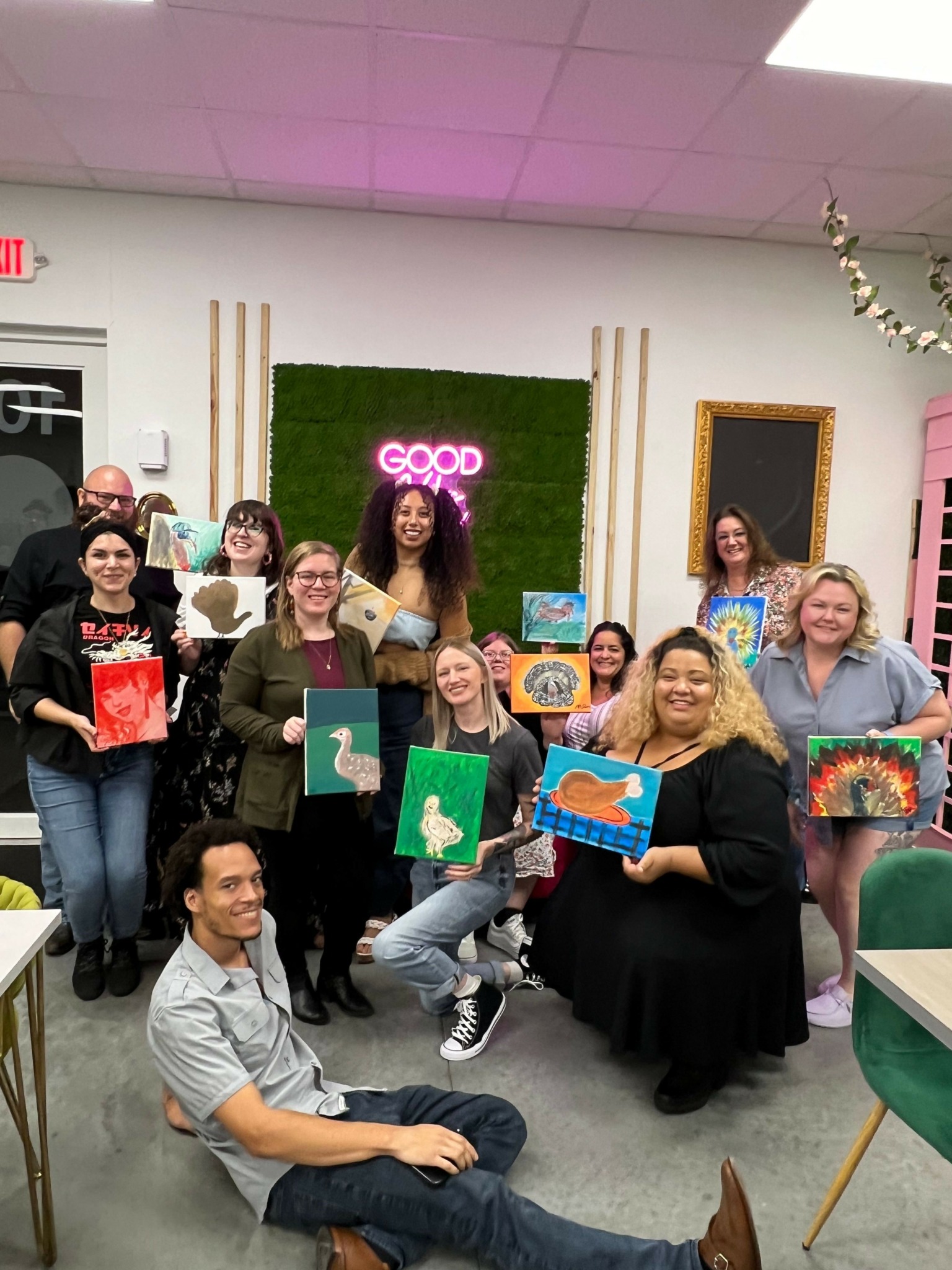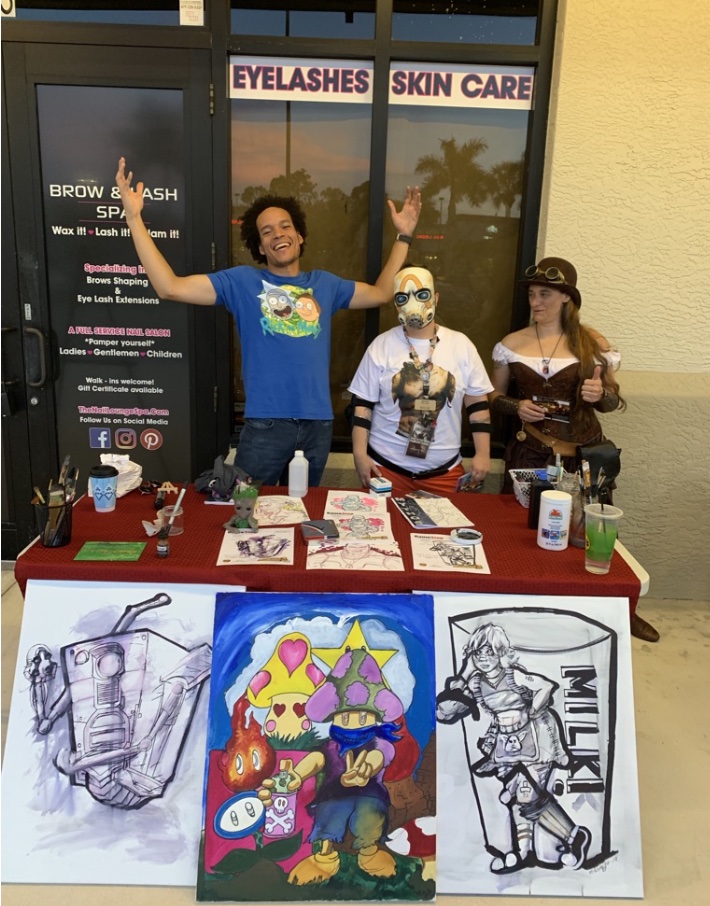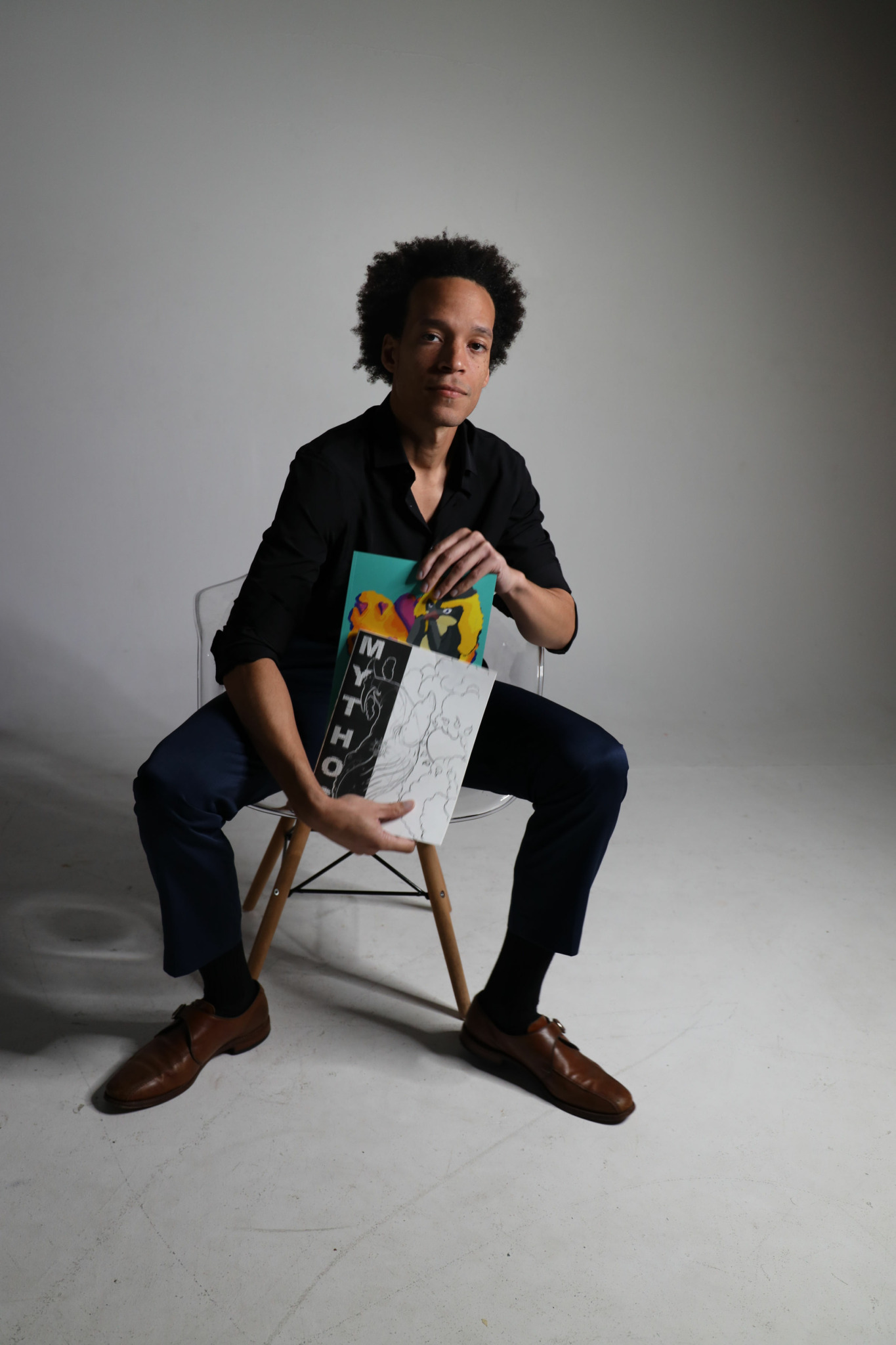Alright – so today we’ve got the honor of introducing you to William Askew. We think you’ll enjoy our conversation, we’ve shared it below.
William, appreciate you joining us today. Alright – so having the idea is one thing, but going from idea to execution is where countless people drop the ball. Can you talk to us about your journey from idea to execution?
Living in New York City, I worked on everything from conceptual fashion designs to marketing materials. During my personal practice as a painter and illustrator, I focused on portraiture of family and friends that told personal narratives. That practice led me into freelance work, where I was commissioned by independent contractors, local gyms, and luxury fashion companies. At the same time, I worked as an educator and as a designer/copywriter at a local magazine. Together, these experiences built my discipline as a creator, educator, and project manager.
When I moved to Florida, I began to see the full impact of those projects. I knew the type of work I could manage, so in 2013 I set up a home studio and started attending local vending opportunities, beginning with Gulf Coast Leisure’s Art and Poetry Networking Events in Fort Myers.
There, I met incredible people like Rohan, known as Lord Sketch, and Gisel of Gisel’s Harmony. They encouraged me to explore Miami’s art scene. For eight months straight, I was active in roughly 400 art events. With each event came new encounters, with celebrities, aspiring artists, and veterans alike. As a result of that engagement, I landed a role as an art director, facilitating live portraits and interviews for headliners at the Write-Side Poets Café. It was a dream come true, achieved by organically following my passions and interests.
At the same time, I felt an arrogance growing alongside my success. I decided to launch a new project focused on lived experiences of homelessness in NYC. I secured sponsors and hosted a series of solo shows to brand the experience. I left Florida and returned to New York. For two years, I poured myself into this project. It was grueling but rewarding, culminating in widely attended shows at Bishop Gallery, Brooklyn Wildlife, Bronx Community College, and other event spaces in Brooklyn. The events showcased portraits, shared first-hand accounts from people experiencing homelessness, and included food and clothing drives to support relief efforts.
Exhausted, I returned to Florida. I took time to reflect on the skills I had developed: managing large projects, networking, budgeting, scheduling, writing scripts for calls and media appearances, handling product variants and allocations, pricing, and logistics. These were all skills I had built instinctively while pursuing a passion project.
At that point, I knew I needed to do three things: take a time out, focus on refining those acquired skills, and explore new opportunities.
After consulting with tech and financial mogul Bridget Jones, I realized we were on the cusp of a transformative era in design, where 3D design and animation would gain popularity in commercial marketing and branding. To better leverage my craft, I registered as a sole proprietorship in 2016, launched my website, and aligned my creative business with my career in design and education.
I began teaching with a STEAM-focused educational program, Full STEAM Ahead, where I learned about 3D design and taught grade schoolers coding and animation. Parallel to my teaching, I freelanced for companies offering 3D design, motion graphics, gaming assets, and branding/pitch decks. I worked with marketing and design organizations and connected with leading professionals who shape today’s visual stories for major companies across the country.
After my time at Full STEAM Ahead, I joined the creative team at Chico’s FAS and White House Black Market, where I learned more about production, in-store marketing, managing remote teams, and digital asset management systems. These remain skills I leverage to this day.
I also found fulfillment in community through a creative writing group, which gave me an outlet outside of business. Today, I continue to evolve, taking on contract work while focusing less on chasing “the next step” and more on building sustainable systems of possibility. Most importantly, I still allow my passions to guide me forward.
My current goal is to open a storefront to house design projects, teach classes, and host sponsored community meetups for charity.

As always, we appreciate you sharing your insights and we’ve got a few more questions for you, but before we get to all of that can you take a minute to introduce yourself and give our readers some of your back background and context?
I got into the design industry by happenstance. I had a single digital arts class in high school and a love for video games, Yoji Shinkawa and Hideo Kojima of Kojima productions were the bases for inspiration on how I wanted to shape my career, Video games made learning systems feel pretty intuitive. Mapping repeatable processes is, in my opinion, the mark of a good craftsman.
I studied independently across different eras and coalitions of art and received training from professors in advertising and print design, as well as mentors during a design/copywriting and administration internship, very Mad Men like. I observed a graduating class at Cooper Union, learning about organizing and studio practices, and I refined my ability to give direction under the guidance of my mentor, Michio Tanaka, who taught at various colleges and universities and ran M.A.D. About Dance, an international modern dance troupe.
The problems I solve for clients usually come down to streamlining processes so we can create high-quality work in less time. I focus on addressing potential obstacles before they arrive, while keeping a positive attitude and a genuine excitement for the work both for its impact on the target audience and for how it can be improved in its next iteration.
What I’m most proud of is the freedom to choose joy. It might sound simple, but I truly believe passion shows in the work we create. I love that when adults see a project come to life, they feel inspired to pursue their own goals with new energy. When children see the work, they light up with joy and ask if they too can be “great.” That’s both humbling and inspiring for me.
With all of this in mind, I try to offer that same reciprocating experience to everyone I encounter, clients, fans, students, friends, family, and colleagues. I believe everyone should feel like their dreams and voices are heard, acknowledged, appreciated, and invested in.

What’s the most rewarding aspect of being a creative in your experience?
The most rewarding aspect of being an artist and creative is that every season, I reach a point where I’ve pushed myself a little more than I anticipated. In those moments, I sometimes feel like I haven’t done enough. I get tired, unsatisfied, even contradictory in my discipline, and then something shifts. I lash out in liberation by doing something completely outside my comfort zone, forcing myself to see the world differently. I’ll pick up a new niche interest or hobby with no intention other than to scratch an itch that can’t be ignored. And when that phase passes, I find myself approaching my work and strategies with fresh perspective.
For example, I’ve always been fascinated with clouds, thick, lush, dramatic clouds. When I first moved to Florida in 2013, I spent six months studying them: their structures, why they form, and why Fort Myers is considered the lightning capital of the nation. I swear, after that I could never look at wind and water the same way again. Ten years later, that fascination even led me to fly a plane for the first time just to get a little closer to the clouds and feel the weight of what I had been taking for granted.
Those moments are the most rewarding to me. They teach me more about myself, give me perspective on where I’m headed, and, most importantly, remind me where I’ve come from.

Do you think there is something that non-creatives might struggle to understand about your journey as a creative? Maybe you can shed some light?
I think something both creatives and non-creatives struggle with myself included is faith. Not faith in the traditional religious sense, but faith as devotion: to the action, to the career, to the purpose, and ultimately to the community. When we focus on what’s right in front of us, we make progress, one foot in front of the other regardless of obstacles or setbacks.
Doubt often comes from comparison. Take me versus you, the reader: although our experiences are different and my path is carved by my own devices, we can both look at the works of Alphonse Mucha, Kay Erasmus Nelson, Kasumasa Nagai, Cipe Pineles, Emory Douglas, or any number of famous designers, illustrators, painters, and artists across history, and find ways to glorify their lives and achievements. Yet we rarely acknowledge the struggles they endured or how they showed up in the lives of others in support, in opposition, or even in reverse.
And with that thought in mind, how often do we look beyond the borders of our own lived experience, with no intention of stepping out to make history ourselves?
This isn’t really a question, but more of an observation: I challenge you to narrow your vision to what you are actively engaging in and walk by faith, that each step, no matter how small, will carry you forward.
Contact Info:
- Website: https://www.artistemor.com
- Instagram: Artist_emor
- Linkedin: https://www.linkedin.com/in/artistemor
- Youtube: https://www.youtube.com/@artistemor

Image Credits
studio 239 and Sherly Bonilla. Please see photo file names for credits.


